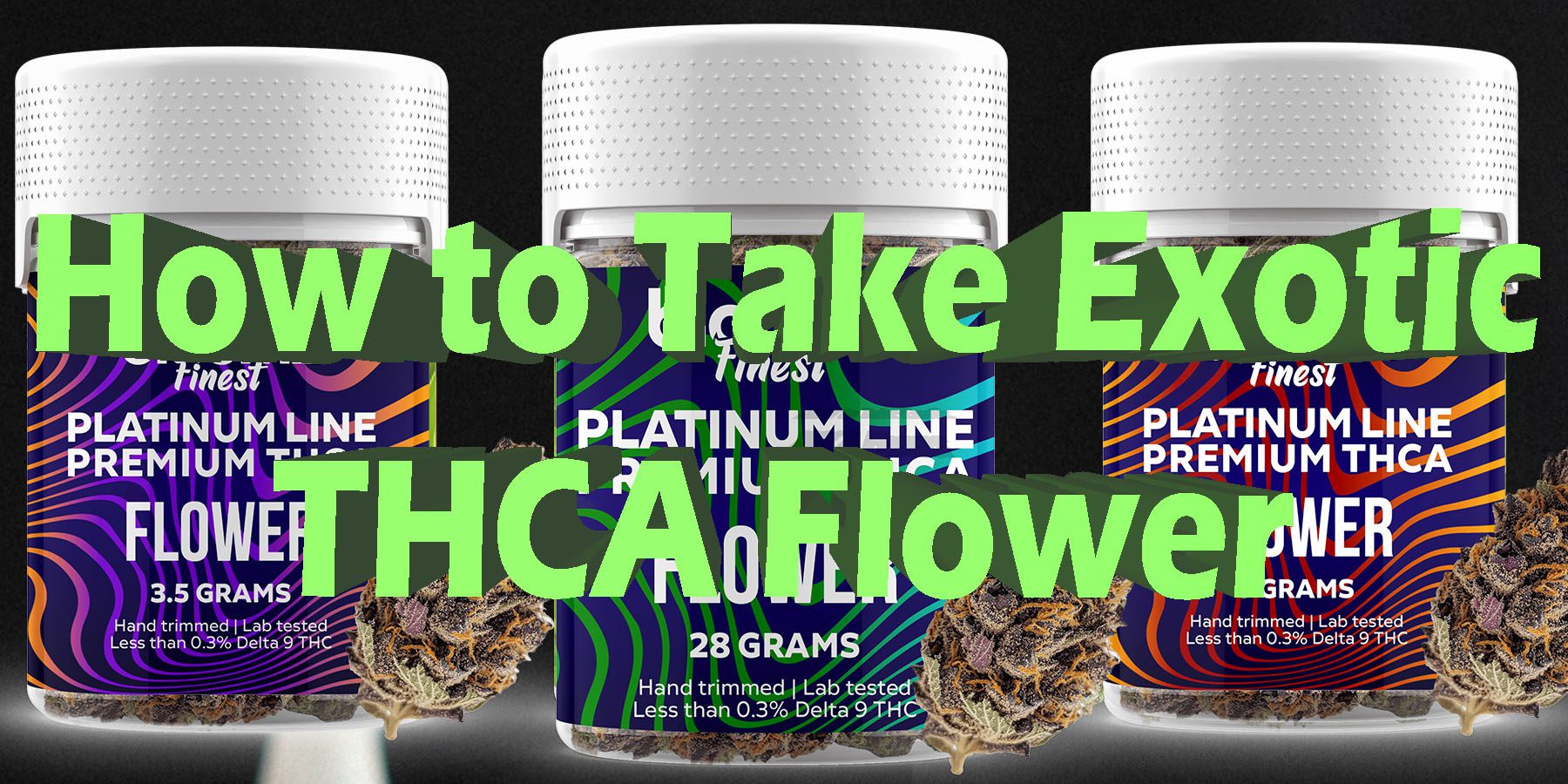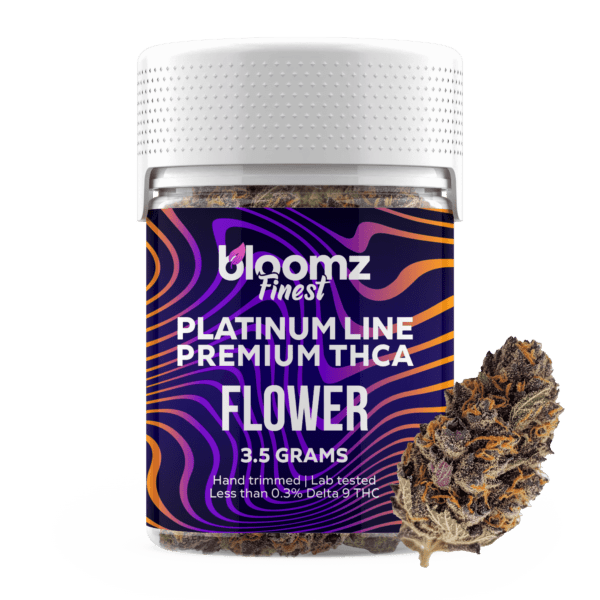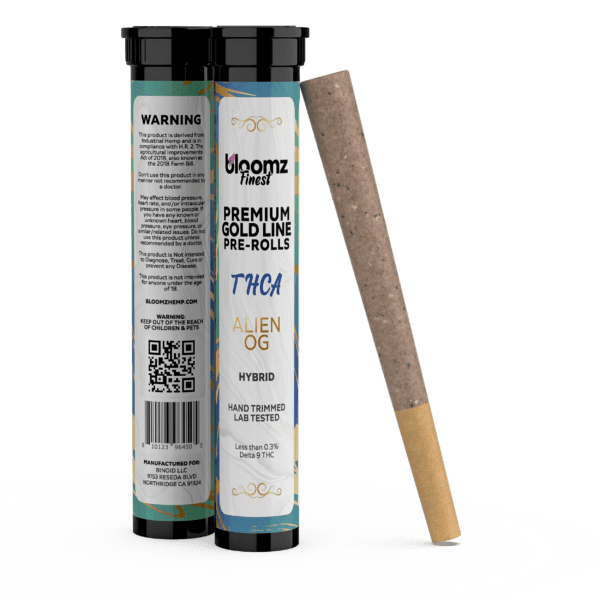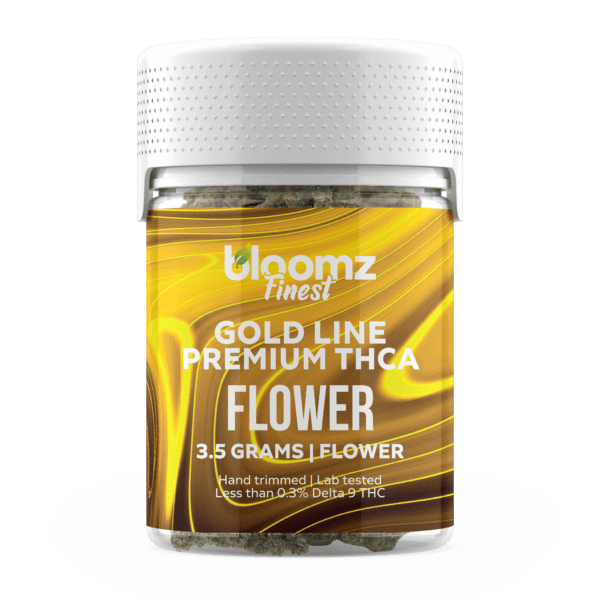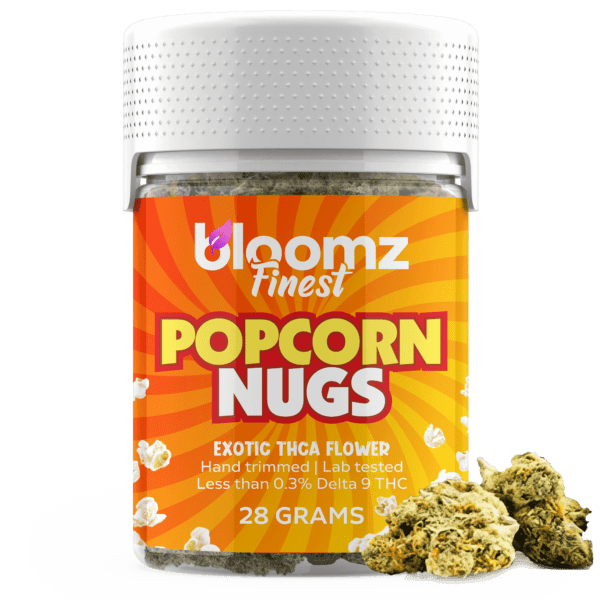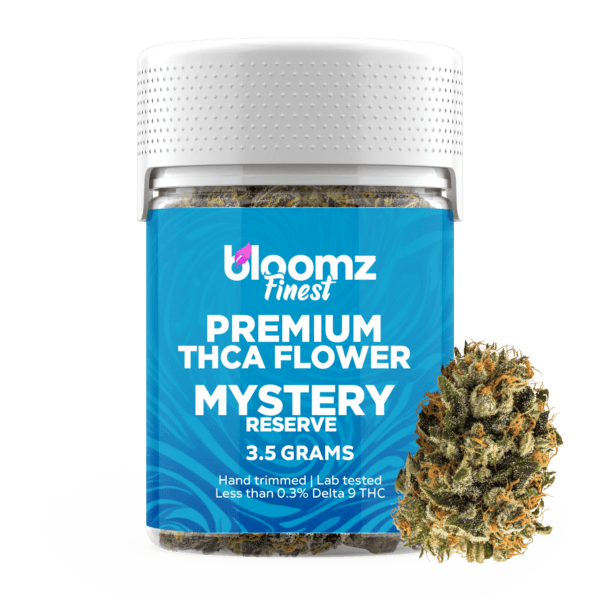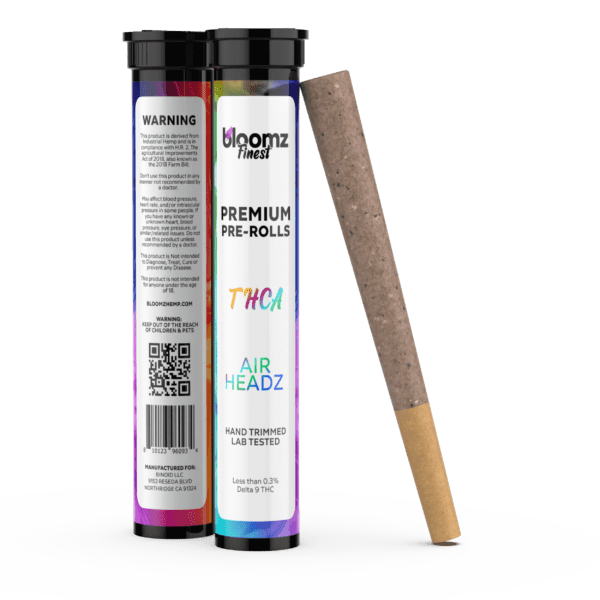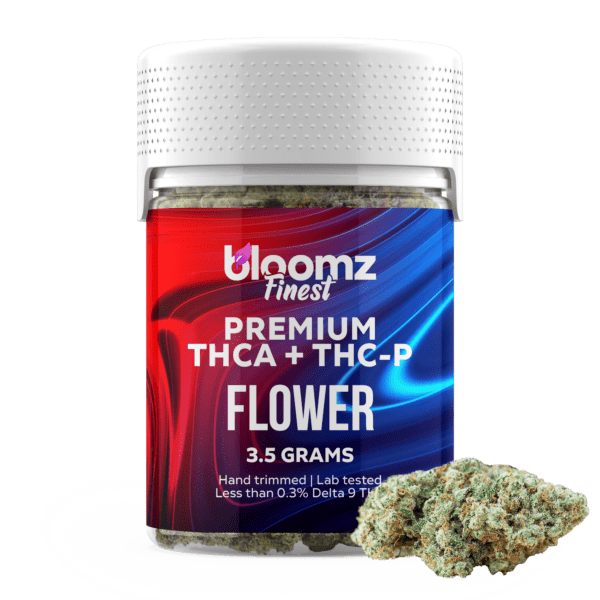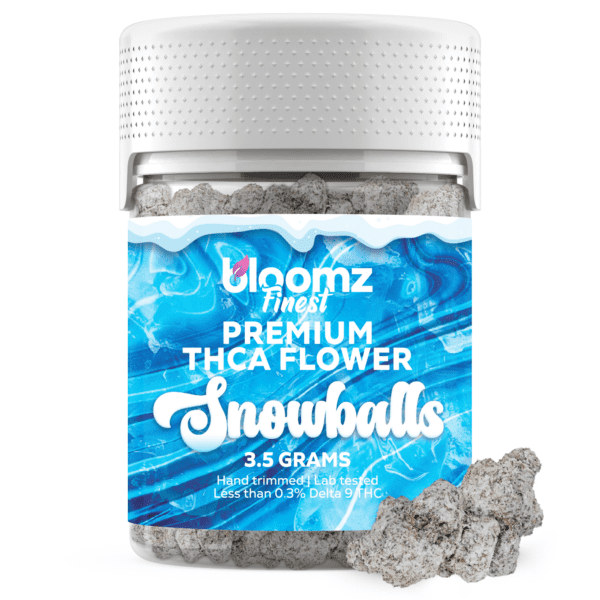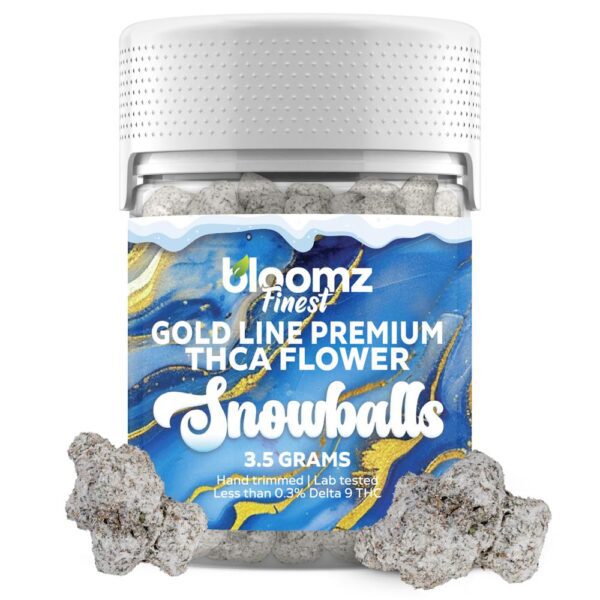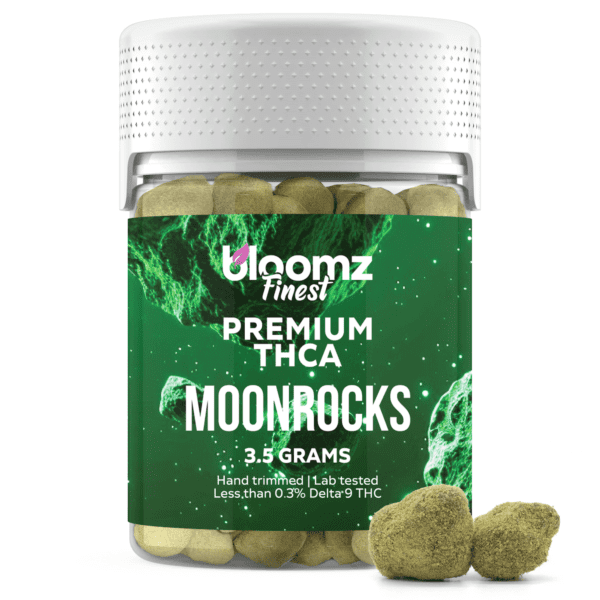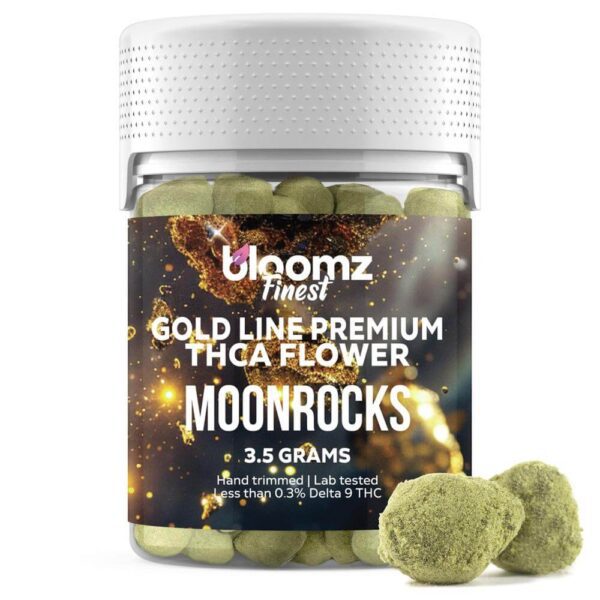Prepare to venture beyond the ordinary. The term “Exotic THCA Flower” beckons – a label reserved for cannabis that transcends the everyday, offering unique genetics, captivating aromas, and a level of quality that speaks to true craftsmanship. This isn’t just flower; it’s an experience waiting to unfold, a carefully cultivated marvel promising distinct character and potent potential. But acquiring such a botanical treasure is merely the first step.
To truly appreciate its nuances and harness its effects effectively requires more than just casual use. It demands understanding, respect, and the right techniques. Let’s peel back the layers and explore how to navigate the captivating world of Exotic THCA Flower.
TO BUY EXOTIC THCA FLOWER CLICK HERE
THCA Flower 101
Pertaining to the coveted “Exotic” label given to THCA flower, it’s primarily about genetics and the resulting unique characteristics that set it apart from more common or classic strains. Exotic flower typically stems from innovative breeding projects, cross-breeding rare or landrace strains, or selecting unusual phenotypes that express distinctive traits. These traits manifest as uncommon terpene profiles leading to unique aromas and flavors (think tropical fruits, complex spices, funky chem notes, or rare floral bouquets), striking visual appeal (vibrant, unusual colors like deep purples, blues, or pinks; unique bud structures), and potentially novel combinations of effects. It’s the “wow” factor – something that immediately signals this isn’t your standard fare. These cultivars are often less widely available, adding to their allure and desirability among connoisseurs seeking novelty and distinction.
This category specifically focuses on flower rich in tetrahydrocannabinolic acid (THCA) – the non-intoxicating precursor cannabinoid that converts to intoxicating Delta-9 THC when heated (decarboxylated). While legally cultivated as hemp (containing less than 0.3% Delta-9 THC by dry weight in its raw state), these exotic strains are bred to achieve high concentrations of THCA, often reaching 30% or more. This significant THCA content translates to considerable potency and pronounced effects once the flower is smoked, vaped, or used in cooking. The combination of rare genetics and high THCA potential makes exotic THCA flower a highly sought-after product for those seeking both a unique sensory journey and substantial effects, all within the legal hemp framework.
Therefore, Exotic THCA Flower represents a fusion of genetic artistry and targeted cultivation aimed at producing hemp flower with standout characteristics and significant potency potential. While cultivation methods can vary (indoor, greenhouse, or even expertly grown outdoor), the emphasis is on nurturing the plant to fully express its unique genetic blueprint. These aren’t mass-market strains; they are often the result of passionate breeders and cultivators pushing the boundaries of what’s possible in cannabis, offering users a chance to experience truly different and memorable profiles. Recognizing this focus on genetic uniqueness and high THCA is key to appreciating what makes this category special.
Who is Exotic THCA Flower Actually Tailored For?
The allure of the “exotic” naturally piques interest, yet this class of THCA flower resonates most deeply with certain individuals within the cannabis community. Its unique characteristics and often potent nature mean it’s not a universal starting point, but rather a destination for those with specific tastes and experience levels. Understanding if Exotic THCA Flower aligns with your preferences is key to a satisfying journey, as it is particularly well-suited for:
The Cannabis Connoisseur: Much like aficionados appreciate rare wines or artisanal cheeses, these individuals seek out the unique and exceptional in cannabis. They value complex terpene expressions, intriguing genetic backgrounds, meticulous cultivation and curing standards, and the sheer aesthetic beauty of well-grown, unique buds. The overall sensory journey matters immensely.
Seasoned Explorers: Consumers who have already navigated the cannabis landscape and possess a good understanding of their personal tolerance levels and desired effects. Exotic THCA flower often boasts significant potency due to high THCA concentrations (which convert to Delta 9 THC when heated), delivering an experience that could be intense for novices but is often sought after by veterans.
Terpene Trailblazers: Those captivated by the power of aroma and flavor, driven by the desire to experience unique and pronounced terpene profiles. Exotic strains are frequently selected or bred for their distinctive aromatic bouquets – from pungent fuel and chemical notes to sweet tropical fruits or savory spices – and the nuanced effects these terpenes can contribute via the entourage effect.
Potency Seekers: Individuals specifically looking for a robust and clearly perceptible effect. Whether aiming for profound relaxation, significant euphoria, or a powerful shift in mindset, the typically high cannabinoid content found in exotic tiers provides a strong foundation for achieving these states.
Adventurers in Cannabinoids: Users interested in exploring the effects of cannabinoids derived directly from high-quality exotic THCA Flower. THCA, as the precursor to Delta 9 THC, offers a unique starting point, and exotic flower provides a rich source for experiencing its potential through various consumption methods, both activated and potentially raw (though THCA itself is non-intoxicating).
Quality and Authenticity Advocates: Consumers who prioritize purity, verifiable quality, and transparency. The “exotic” designation often implies higher standards, including careful cultivation and, crucially, comprehensive third-party lab testing to confirm potency profiles and screen for unwanted contaminants.
5 Key Things to Look for in THCA Flower
Embarking on the quest for genuine Exotic THCA Flower requires a discerning approach. The term itself can sometimes be used loosely, so knowing how to identify true quality is paramount. Focusing on specific indicators helps separate the legitimately special flower from the pretenders, ensuring your experience aligns with the “exotic” promise. So, pay close attention to the following:
Lab Testing: This is the bedrock of trust and transparency in any cannabis product, especially one labelled “exotic.” Insist on seeing a recent, detailed Certificate of Analysis (CoA) from a reputable, independent third-party laboratory. This document provides critical data: the cannabinoid profile (confirming high THCA levels and compliant Delta 9 THC levels pre-decarboxylation), the terpene analysis (detailing the aromatic compounds influencing scent, taste, and effect), and crucial safety screenings (verifying absence of pesticides, heavy metals, molds, bacteria, and residual solvents). Legitimate vendors make CoAs readily available, often linked via QR code or on their website. Avoid any THCA flower lacking transparent, comprehensive testing
Source and Cultivation: Exceptional exotic THCA Flower doesn’t happen by accident; it’s the result of expert cultivation. Investigate the flower’s origin story. Was it grown indoors under precisely controlled conditions (common for exotic grades), in a high-tech greenhouse, or perhaps sungrown by cultivators specializing in premium outdoor techniques? Look for details about the growing methods – use of organic inputs, living soil, specific nutrient regimens, pest management strategies. The drying and curing process is just as vital; a slow, meticulous cure in a controlled environment is essential for preserving volatile terpenes and cannabinoids, ensuring optimal flavor, aroma, and smoothness. Reputable sources are usually proud to share details about their cultivation prowess.
Terpene and Strain Profiles: Exotic THCA flower truly shines in its unique aromatic and genetic makeup. Delve into the terpene profile, often detailed on the CoA. Familiarize yourself with major terpenes (like Limonene, Caryophyllene, Myrcene, Linalool, Pinene) and their typical scent associations and potential effects. Exotic strains often feature less common terpenes or unique combinations that create distinct experiences. Research the strain itself – what is its lineage? Is it a rare phenotype, a cutting-edge hybrid, or a landrace variety known for specific traits? Understanding the interplay between the strain’s genetic tendencies (often broadly classed as Indica, Sativa, or Hybrid) and its specific terpene fingerprint helps you choose a flower whose potential effects and sensory characteristics align with your desires.
Visual Inspection: Your eyes are invaluable tools for assessing quality, whether you’re examining the THCA flower up close or scrutinizing high-quality images online. Genuine exotic flower typically displays impressive “bag appeal.” Look for dense, well-formed buds that are expertly trimmed, removing excess sugar leaves without damaging the structure. A thick, sparkling coat of trichomes (the tiny, crystal-like glands) is a key indicator of potency and quality. Colors should be vibrant, reflecting the strain’s genetics – expect deep greens, potentially accented with purples, oranges, or reds. Avoid buds that appear brown, overly dry, loose or airy, or excessively handled. When buying online, demand clear, high-resolution photos from multiple angles provided by a trustworthy vendor.
Aroma Check: If possible, let your nose be the guide. Open the container and take a deep inhale (without touching your nose to the flower). Exotic THCA flower should unleash a powerful, complex, and enticing aroma that clearly reflects its rich terpene content. Whether it hits you with pungent gas, sweet berries, zesty citrus, earthy pine, or exotic spices, the scent should be pronounced and multi-layered. A faint or hay-like smell suggests age, poor curing, or improper storage, meaning terpene degradation. Any hint of mustiness, mold, or ammonia is a definite red flag indicating contamination or spoilage. A truly captivating aroma is often the final confirmation of exceptional quality.
What are the Methods for Taking THCA Flower?
Having acquired a batch of stunning Exotic THCA flower, the next step is deciding how best to experience its unique qualities. The chosen method is far more than just a delivery system; it profoundly influences the onset, intensity, duration, and flavor profile of your experience. Basically, considering your preferences, desired outcome, available equipment, and setting will guide you to the ideal approach for engaging with your exotic buds.
Method #1: Smoking
Smoking stands as perhaps the most ancient and iconic method of cannabis consumption, readily applicable to Exotic THCA flower. It involves the combustion of the plant material, which instantly heats the THCA, converting it into inhalable Delta 9 THC that rapidly enters the bloodstream via the lungs. Common smoking implements include joints (finely ground flower rolled in paper), blunts (flower rolled in tobacco leaf or hemp wraps), hand pipes (simple devices with a bowl and stem, often made of glass, wood, or metal), and bongs or water pipes (which draw smoke through water for cooling and filtration before inhalation). The direct application of flame ensures immediate decarboxylation and effects that are typically felt within seconds to minutes.
The enduring popularity of smoking stems from its simplicity, the ritualistic aspect many enjoy, and the near-instantaneous feedback on effects, allowing for easier dose titration. Rolling a joint or packing a fresh bowl can be a satisfying process in itself. However, the act of combustion generates tar and other potentially irritating byproducts, which can be harsh on the respiratory system. Furthermore, smoke produces a distinctive and potent odor that tends to linger, making discretion challenging. Despite these considerations, smoking remains a favored method for many seeking a quick onset and the full, robust experience offered by their Exotic THCA flower.
Method #2: Vaping
Vaporizing, particularly with a device designed for dry herb, offers a modern alternative to smoking Exotic THCA flower, prized for its ability to deliver effects with potentially less irritation and enhanced flavor clarity. Vaporization works by heating the flower to temperatures sufficient to boil off the cannabinoids (including converting THCA to THC) and terpenes into an aerosolized vapor, but crucially, below the temperature required for combustion. This significantly reduces the formation of tar and other combustion-related irritants. Dry herb vaporizers range from discreet portable units to powerful desktop models, employing heating methods like conduction (heat via direct contact) or convection (heat via hot air circulation) to gently extract the desired compounds.
Using a dry herb vaporizer typically involves grinding the flower, loading it into the device’s heating chamber, and selecting a desired temperature. Different temperature settings can subtly alter the experience; lower temperatures (e.g., 320°F-360°F / 160°C-182°C) often maximize terpene flavor and produce milder effects, while higher temperatures (e.g., 370°F-420°F / 188°C-215°C) yield denser vapor and more potent effects. Similar to smoking, the onset is quick (usually within minutes) due to lung absorption. Vaping is often preferred for its smoother inhalation, cleaner taste that highlights the flower’s terpene profile, reduced odor compared to smoke, and potential for greater efficiency. The trade-offs include the initial cost of purchasing a quality vaporizer and the need for periodic charging and cleaning.
Method #3: Cooking/Baking
Utilizing Exotic THCA flower to create homemade edibles opens up a completely different avenue of experience, characterized by delayed onset but prolonged and often more intense effects. This method requires careful preparation, primarily involving two essential stages: decarboxylation and infusion. Firstly, the raw flower must be heated gently – commonly in an oven set to a low temperature (typically 220°F-240°F or 105-115°C) for about 30-45 minutes – to convert the non-intoxicating THCA into psychoactive THC. This “decarbing” step is absolutely critical; without it, the resulting edibles will lack significant potency. After decarboxylation, the activated flower is typically infused into a fat, such as butter, coconut oil, or olive oil, by simmering the flower in the chosen fat over low heat for several hours, allowing the fat-soluble cannabinoids like THC to meld with the oil.
The resulting infused fat (often called cannabutter or canna-oil) becomes a versatile ingredient for a vast array of culinary creations. It can be seamlessly incorporated into recipes for baked goods like brownies, cookies, or cakes, providing a sweet route to consumption. Alternatively, it can be used in savory dishes, integrated into sauces, dressings, pasta dishes, or even used to sauté vegetables, offering smoke-free options for those who prefer not to inhale. The main challenges lie in achieving accurate dosing, which can be tricky with homemade infusions, and managing the delayed onset – effects typically take 30 minutes to 2 hours to become apparent as THC is processed metabolically. However, the potent, full-body effects can last much longer (4-8+ hours), making edibles a preferred choice for sustained relief or prolonged recreational experiences.
Method #4: Extraction for Concentrates
For users seeking the pinnacle of potency and flavor intensity, Exotic THCA flower can serve as premium source material for creating cannabis concentrates. This advanced method involves processes designed to strip the cannabinoids and terpenes from the plant matter, resulting in a product significantly more concentrated than the original flower. A popular and relatively safe method suitable for home exploration is rosin pressing. This solventless technique employs controlled heat and high pressure (using a dedicated rosin press) to physically squeeze the resinous oils directly from the cannabis buds (flower rosin) or from hash made from the flower (hash rosin). The end product, rosin, is a potent, terpene-rich concentrate.
While other extraction methods exist, often employing solvents like butane, CO2, or ethanol, these typically require sophisticated laboratory equipment, technical expertise, and stringent safety protocols due to the volatile nature of the solvents, making them generally unsuitable and unsafe for home environments. Concentrates derived from exotic flower, such as rosin, shatter, wax, or budder, boast exceptionally high levels of THC, often ranging from 60%-90%(+). These potent products are usually consumed through dabbing (vaporizing on a heated surface), using specialized vape pens designed for concentrates, or by adding a small amount to enhance flower in a bowl or joint. Extraction maximizes potency and often delivers incredibly intense flavors, but it demands specific equipment (like a press for rosin), know-how, and yields a product best reserved for experienced consumers due to its sheer strength.
How to Take THCA Flower Properly and Effectively Based Upon the Selected Method
Getting the absolute best from your Exotic THCA flower isn’t just about picking a method; it’s about mastering the nuances of that method. Small adjustments in preparation and technique can significantly impact the efficiency, flavor, and overall quality of your experience, ensuring the premium characteristics of your exotic buds truly shine through. Refining your approach allows for greater control, consistency, and enjoyment, regardless of how you choose to consume. Let’s break it down further:
Smoking: Consistency in your grind is crucial. Aim for a medium-fluffy consistency using a grinder – too fine can impede airflow or pull through into your mouth, while too coarse leads to uneven burning. When packing a bowl in a pipe or bong, apply light pressure to create an even surface that allows air to pass through easily. For joints and blunts, strive for a firm, even roll to prevent canoeing (burning unevenly down one side) or difficult draws. Utilize the carb hole effectively on pipes/bongs: cover it during the initial draw to milk the chamber, then release it as you inhale the collected smoke. Practice “cornering” the bowl – lighting only a small section at a time – to conserve your THCA flower and savor the terpene profile over several hits, rather than incinerating the entire surface at once. Smooth, steady inhales generally provide a better experience than sharp, forceful ones.
Vaping: Match your grind to your vaporizer’s specifications; many perform optimally with a medium-fine grind but check your device’s manual. Avoid overpacking the chamber, particularly with convection vaporizers, as good airflow is essential for even heating and efficient vapor production. Experiment intelligently with temperature settings. Lower temperatures (approx. 320°F-350°F / 160°C-177°C) tend to preserve delicate terpenes, offering brighter flavors and potentially lighter effects. Mid-range temperatures (approx. 350°F-390°F / 177-199°C) often provide a balanced profile of flavor and stronger effects. Higher temperatures (approx. 390°F-430°F / 199°C-221°C) maximize vapor density and potency but may degrade some terpenes, altering the flavor. Practice slow, deliberate draws, like sipping a hot beverage, for 5-10 seconds to allow the vaporizer to generate dense, flavorful vapor effectively. Maintaining a clean vaporizer (chamber, mouthpiece, screens) is vital for optimal performance and taste.
Cooking/Baking: Precision during decarboxylation is non-negotiable for potent edibles. Use an oven thermometer to ensure your oven temperature is accurate (target 220°F-240°F / 105°C-115°C) and spread your ground THCA flower evenly on a parchment-lined baking sheet for consistent heating. When infusing into your chosen fat (butter, oil), use low, gentle heat (a slow cooker or double boiler can be helpful) and allow ample time (often 2-4 hours or more, depending on the method) for the cannabinoids to infuse thoroughly, stirring occasionally. Strain the infused fat carefully using cheesecloth or a fine-mesh sieve to remove all plant material. Calculating dosage is crucial but challenging: estimate the total active THC (THCA% x 0.877 + initial Delta 9 THC%), account for potential losses (assume ~70%-80% efficiency as a rough guide), determine THC per unit of fat, and then calculate THC per serving of your final recipe. Always start with a very low dose (e.g., 2.5-5mg THC, potentially less) when trying a new batch, wait at least 1.5-2 hours to fully assess effects, and label clearly.
Extraction (Focusing on Rosin): For optimal rosin yields and quality, ensure your starting Exotic THCA Flower is properly humidified (around 60-65% RH often works well). Using rosin filter bags (micron size selection depends on preference and starting material – e.g., 90-120 micron for flower) helps produce cleaner rosin. Temperature and pressure are key variables on your rosin press: lower temperatures (approx. 160°F-190°F / 71°C-88°C) tend to preserve more volatile terpenes, often resulting in a budder or sauce consistency (“live rosin” feel), while higher temperatures (approx. 190°F-220°F / 88°C-104°C) may increase yield but can degrade some terpenes, potentially leading to a more stable, shatter-like consistency. Apply pressure gradually and monitor the flow of rosin. Typical press times range from 45 seconds to a few minutes. Allow the pressed rosin to cool slightly before collecting it carefully with a dab tool. When consuming (dabbing), use appropriate temperatures – low-temp dabs (approx. 450°F-550°F / 232°C-288°C) are generally preferred for preserving flavor.
Can You Smoke THCA Flower if You’re Also Using Other Cannabinoid-Infused Products?
Integrating Exotic THCA flower into a routine that already includes other cannabinoid products is feasible, but it demands a thoughtful and cautious approach. The modern cannabinoid market offers an immense variety of products, from non-intoxicating isolates like CBD or CBG to powerful psychoactive compounds found in edibles, vapes, and concentrates. Combining these – for example, vaping Exotic THCA flower after taking a Delta 8 edible, or alongside a CBD tincture – can create complex interactions. Sometimes these interactions might be synergistic, potentially enhancing desired feelings or modulating effects (akin to the entourage effect), but other times they can lead to unexpectedly intense or uncomfortable outcomes. Understanding your personal tolerance and the specific profiles of all products being combined is absolutely essential.
The resulting experience when mixing products hinges heavily on which cannabinoids are involved and their delivery methods. Think about the spectrum: non-intoxicating options like CBC, CBD, CBDA, CBG, or CBN might subtly influence or temper the potent effects of the THC activated from your exotic THCA flower. Mildly potent cannabinoids such as Delta 10 THC, THCV, or THCM could introduce different experiential qualities. Moderate choices like Delta 8 THC, Delta 9 THC (if also present in other products), Delta 11 THC, or HXY-11 THC might create additive effects. Combining potent THCA flower (yielding strong Delta 9 THC) with other highly potent cannabinoids often found in pre-filled disposable vapes or cartridges, potent edibles (gummies, candies, mints, chocolates, baked goods), beverages (infused water, tea, soda, liquid shots), capsules, potent tinctures, or wax dabs (containing HHC, HHC-O, HHC-P, PHC, THC-B, THC-H, THC-JD, or THC-P) requires significant caution, as this can dramatically amplify intensity and duration. The product format also plays a role; layering the fast onset of inhaled flower with the slow, creeping effects of an edible demands careful planning regarding dosage and timing.
If you currently use other cannabinoid products or are considering combining them with your Exotic THCA flower, adopt a strategy rooted in awareness and moderation like the following:
Prioritize Knowledge and Caution: Recognize that combining Exotic THCA flower with other cannabinoid products requires a mindful and informed approach. Understanding potential interactions is key before proceeding.
Embrace the “Start Low and Go Slow” Mantra: This is especially crucial when trying a new combination for the first time. Don’t assume your tolerance for one THCA product translates directly when adding another.
Initial Minimum Dosing: Begin with the smallest effective dose of each product involved in the combination. This allows you to safely assess how the specific mix interacts with your individual body chemistry without being overwhelmed.
Meticulous Tracking is Essential: Keep a detailed log of your consumption. Note the specific cannabinoids in each product (e.g., THCA/THC, CBD, Delta 8, HHC), their potencies (always verify with lab reports/CoAs), the exact dosage of each product taken, and the timing of consumption for each
Tune Into Your Body & Mind: Pay close attention to how you feel after combining THCA products. Be vigilant for any effects that seem stronger than expected, different from usual, or any unexpected sensations. Self-awareness helps prevent overconsumption.
Exercise Extreme Caution with High-Potency Mixes: Be particularly careful when considering combinations involving multiple highly potent psychoactive cannabinoids. For example, mixing potent Delta 9 THC (from your decarbed THCA flower) with products containing strong compounds like THC-P, HHC-P, THC-H, or THC-JD can significantly amplify effects and should be approached with heightened awareness, especially if you have a lower tolerance.
Demand Transparency Through Lab Testing: Only combine products that come with accessible, comprehensive third-party lab reports (CoAs). This ensures you have accurate information about the cannabinoid content and purity of everything you are consuming, which is vital for making informed and safer combination choices.
Recommended products
A Quick Word on Storing THCA Flower Before and After Use
Investing in Exotic THCA flower means acquiring a product prized for its unique characteristics – potent cannabinoids and volatile terpenes carefully preserved through expert cultivation and curing. To safeguard this investment and ensure every session is as good as the first, proper storage is not just recommended, it’s essential. The primary enemies of harvested cannabis are air (oxygen), light (especially UV), heat, and improper humidity levels. Exposure to these elements rapidly degrades the compounds responsible for the flower’s effects, aroma, and flavor, turning vibrant, sticky buds into something dull, dry, and far less enjoyable. Whether your exotic flower arrived in premium packaging or needs a new home, understanding the following optimal storage practices is key to maintaining its exceptional quality from the moment it’s acquired until the final bud is enjoyed:
Choose Airtight Glass Jars: Utilize containers like mason jars as the preferred storage solution. Glass is non-reactive, ensuring it won’t alter the flower’s flavor profile.
Ensure an Airtight Seal: The seal is crucial for preventing oxygen exposure. Oxygen degrades cannabinoids (like THCA and THC) and terpenes over time, reducing potency and altering flavor.
Maintain a Cool Environment: Store the jar in a consistently cool location. Excessive heat accelerates the degradation of cannabinoids and terpenes.
Prioritize Darkness: Keep the THCA flower away from light, especially direct sunlight. UV rays are particularly effective at breaking down vital compounds, diminishing the quality and potency of your buds.
Ensure Dry Conditions: Store the jar in a place with low ambient humidity. Excess moisture can promote mold and mildew growth.
Select Suitable Locations: Ideal spots include closets, drawers, or cabinets that are away from heat sources (like electronics or radiators) and windows.
Avoid Refrigeration: Do not store flower in the refrigerator. Temperature fluctuations and condensation inside the fridge can introduce excessive moisture, creating a risk for mold.
Steer Clear of Freezing: Freezing cannabis THCA hemp flower is generally not recommended. It can make the delicate trichomes (which house cannabinoids and terpenes) brittle, causing them to break off easily and reducing potency.
Control Relative Humidity (RH): Aim to maintain an RH level between 58%-62% inside the storage container. This optimal range preserves the flower’s texture, prevents it from becoming overly dry (leading to harshness and terpene loss), and inhibits mold growth.
Utilize Humidity Control Packs: Consider adding two-way humidity packs (e.g., Boveda, Integra Boost) to your storage jars. These packs automatically add or remove moisture vapor to maintain the target RH level consistently.
Transfer from Original Packaging (If Needed): If your flower comes in bags (especially plastic ones which can create static that pulls off trichomes), transfer it to airtight glass jars for superior long-term storage.
Reseal Tightly After Each Use: Always ensure the lid is securely fastened immediately after opening the jar to minimize air exchange.
Grind Just Before Use: Avoid grinding large quantities of flower in advance. Grinding significantly increases the surface area exposed to air, accelerating the degradation process. Grind only what you intend to use shortly beforehand.
Apply Principles Consistently: These storage guidelines apply equally whether you are storing a freshly opened package or preserving leftover THCA flower after use.
Recommended products
Pros & Cons of Taking THCA Flower
Opting for Exotic THCA flower presents a compelling set of benefits that attract those seeking premium cannabis experiences, but it also comes with certain considerations that might make it less ideal for some users or situations. Weighing these advantages and potential drawbacks helps ensure your choice aligns perfectly with your expectations, experience level, and consumption goals. After all, it represents a higher tier of quality, offering distinct possibilities and requiring informed consideration.
Pros
The following advantages for taking it are:
Potentially High Potency: Exotic THCA flower often contains elevated levels of THCA, leading to significant Delta 9 THC content upon heating and delivering robust, pronounced effects.
Rich and Unique Terpene Profiles: These strains are frequently selected for their complex and distinctive terpene compositions, resulting in captivating aromas, nuanced flavors, and potentially varied effects via the entourage effect.
Access to Unique Genetics: The “exotic” label often signifies rare or specialized strains and phenotypes, offering experiences potentially different from more common varieties.
Intense Sensory Experiences: The combination of high potency, complex terpenes, and unique genetics can lead to powerful feelings of euphoria, deep relaxation, or other desired states.
Versatile Consumption Options: Like all THCA hemp flower, it can be enjoyed through various methods – smoking, vaping, edibles (with prep), or extraction – offering flexibility.
Appeals to Connoisseurs: It satisfies the desire for novelty, quality, and complexity sought by experienced users and cannabis enthusiasts looking for top-tier products.
Exceptional Visual Appeal: Exotic flower typically boasts striking aesthetics – dense buds, vibrant colors, abundant trichomes – often referred to as “bag appeal”.
Elevated Overall Experience: For those seeking it, the combination of potent effects, rich flavors, and unique aromas provides a more engaging and sophisticated cannabis experience.
Cons
These are pretty much the only drawbacks:
Potentially Overwhelming Potency: The high THC potential can be too intense for individuals new to cannabis or those with lower tolerances, possibly leading to discomfort if not consumed cautiously.
Higher Price Point: Due to the specialized cultivation, unique genetics, and often higher quality standards associated with “Exotic” flower, it typically commands a premium price compared to standard cannabis THCA flower.
Potential for Mislabeling/Authenticity Concerns: Because “Exotic” implies high quality and commands interest, there’s a risk of encountering products that are mislabeled. Consumers need to be vigilant in verifying authenticity through reliable sources and lab reports.
Now You Have a Better Idea on How to Take Exotic THCA Flower!
Stepping into the realm of Exotic THCA flower is an invitation to elevate your cannabis appreciation, moving beyond the basics into a world of nuance, potency, and unique character. With a clearer understanding of how to select, handle, store, and consume these premium buds, you’re no longer just a passive participant but an active curator of your own experience.
Let this knowledge guide your explorations, encouraging you to experiment responsibly, prioritize verifiable quality, and truly savor the distinct journey each exotic strain offers. The path to unlocking the full potential held within these exceptional flowers is now open for you to tread with confidence and enjoyment, especially when you choose Bloomz for all your Exotic THCA flower needs, like our THCA Flower – Mystery Reserve or Blazed Exotic THCA Flower.

